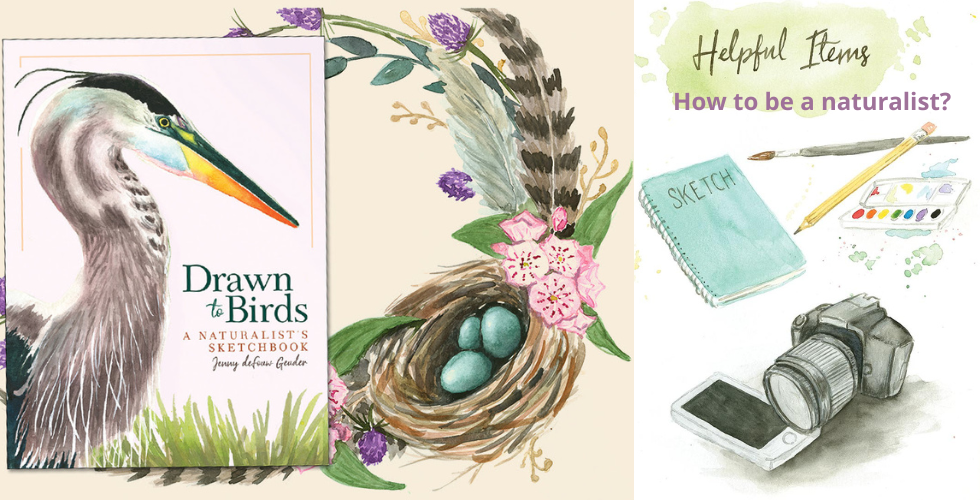
How to Be a Naturalist
Jenny deFouw Geuder, author of Drawn to Birds: A Naturalist’s Sketchbook, shares with us how to be a naturalist: what is needed, what tools are involved, and even some tips on how to draw and color.
Notice
What makes you stop and look closer? Take a walk around your backyard or a park. What are you drawn to? Take your time.
Take some notes
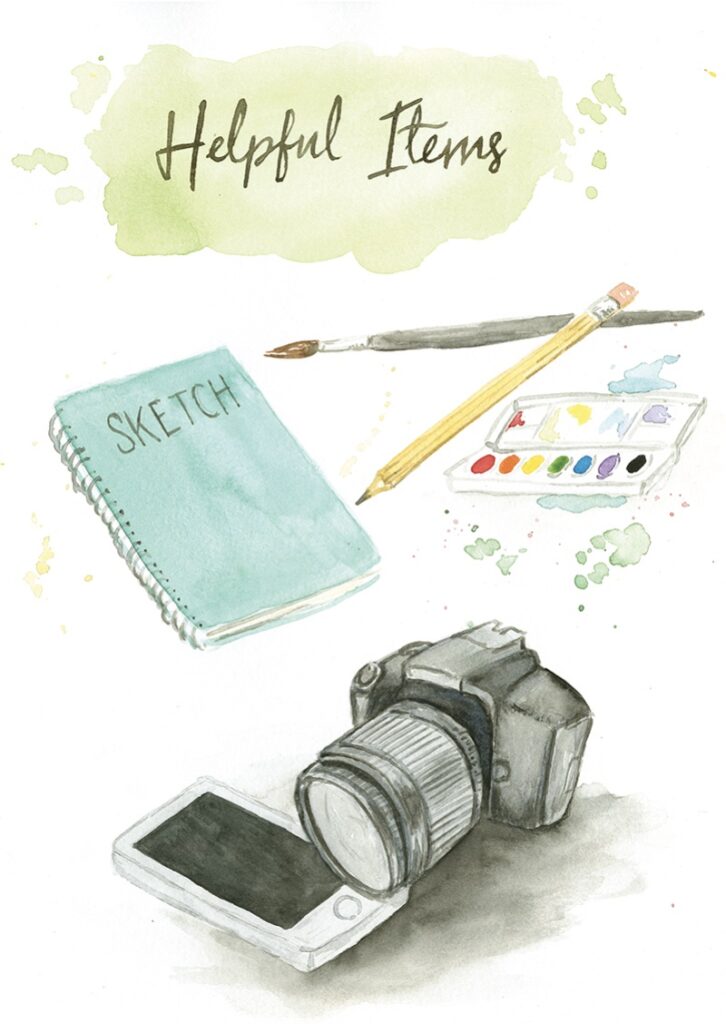
What do you see? Where? When? What season or time of the day? How often? Notice variations. Keep a notebook or sketchbook.
Naturalist definition: Noun “A person who studies nature, especially by direct observation of animals and plants.”
Record
Sketch, paint, photograph. Be a professional “notice.” Look, and then look again. Compare proportions, angles, and colors. Zoom in, and back out.
When sketching, simplify complex objects down to their basic shapes. Draw lightly. Compare sizes. I like to use the head to measure—“the body is two heads long.” Wash in the same light basic colors. Layer and add details. Notice texture.
Why Be a Naturalist?
1.) Develop sharp sensory awareness. Be a noticer. Watch. Listen. Gather information. Practicing these skills is shown to help with critical thinking, memory, decision-making, and stress management.
2.) Develop common sense. Paying attention to your surroundings—and being aware of the world around you—is a very useful skill. It teaches long-term thinking and patience, rather than instant gratification.
3.) Care for our world. John Muir wrote: “When we try to pick out anything by itself, we find it hitched to everything else in the universe.”
Noticing the relationship and patterns in nature helps us understand the past, present, and future of our environments.
Helpful Items
Gather art materials, such as a sketchbook, watercolors and brushes, pencils, and a camera or iPhone. Binoculars are also useful (nothing fancy, 7X8 is plenty). Always use the neck strap, as you do not want to drop your precious tool. To find the bird, lock your eyes on it, and bring binoculars up to your eyes and into alignment. Practice a little. It works!
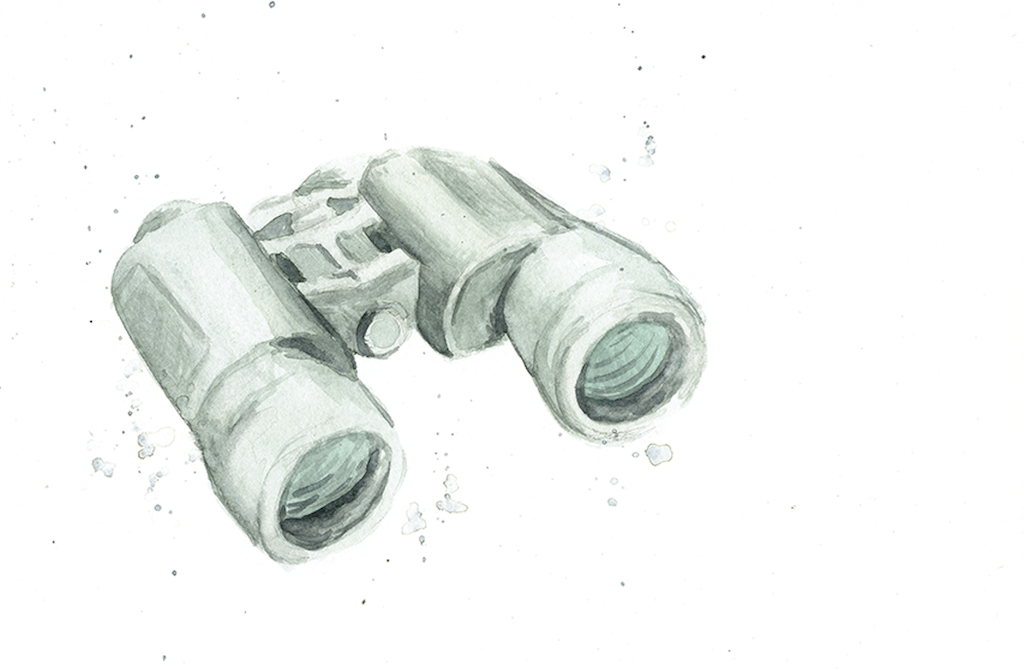
Always use good walking or hiking shoes. Start small and choose the right trail for your fitness level. Make sure you check the weather.
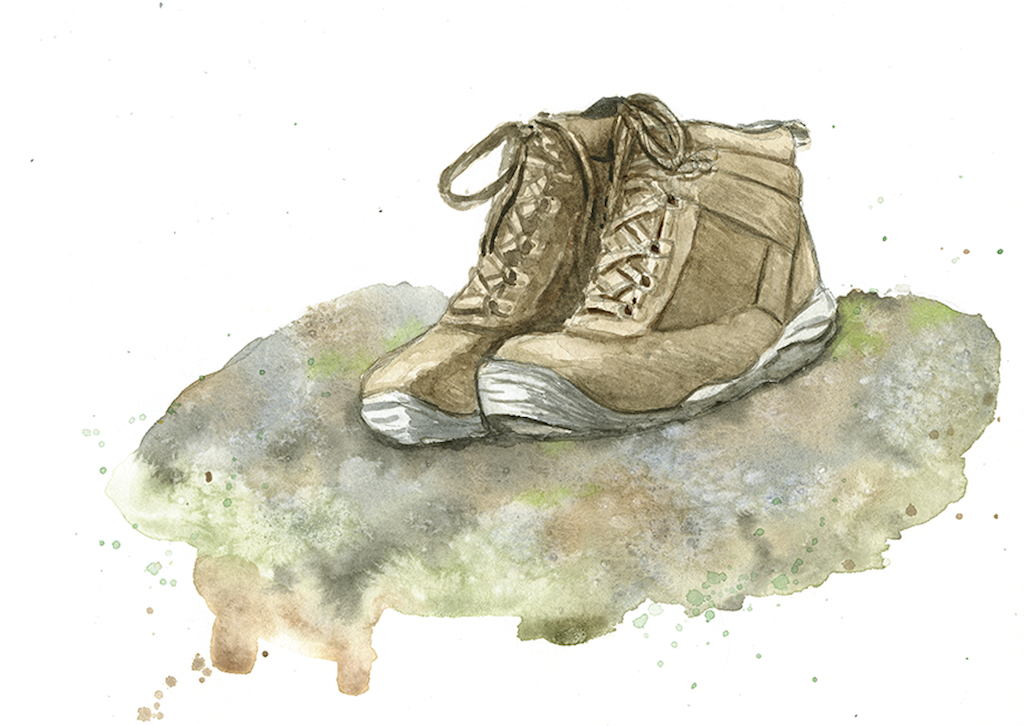
Drawing Animals and Sketching Plants
This beautiful Barred Owl rested in my backyard. Try to draw it!
Start with the basic shapes— the Barred Owl used here as an example is a circle on an oval. Keep your pencil lines light. Measure. His body is about 2 heads long. Next, erase your extra lines. Look for details around the eyes, beak, feet, and feather groups. If you plan on painting, don’t shade anything in.
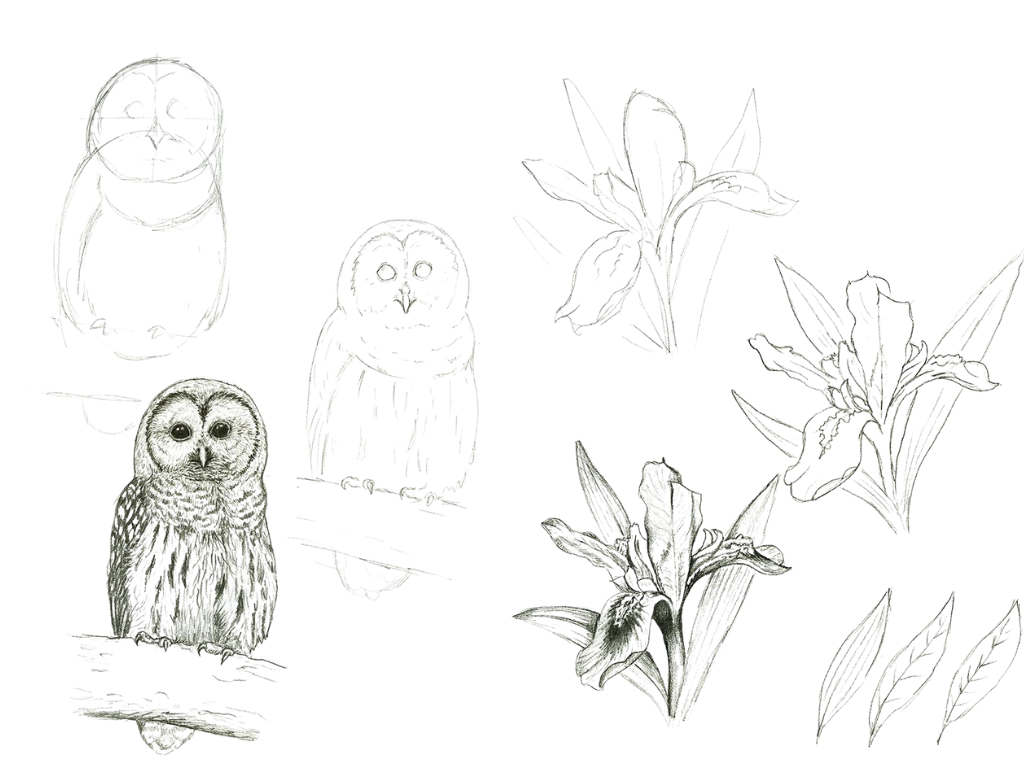
Add shading (a range of value) or color. Pay attention to the direction of the feathers (or fur) as it grows in. Push for more contrast: the darkest darks, the lightest lights.
Sketch basic shapes light and loose. With plants, pay attention to how many petals there are, leaf shapes, and arrangement of the veins (straight across or alternating).
Clean it up and look for details. Shade or color. Try it!
Ink and Watercolor Tips
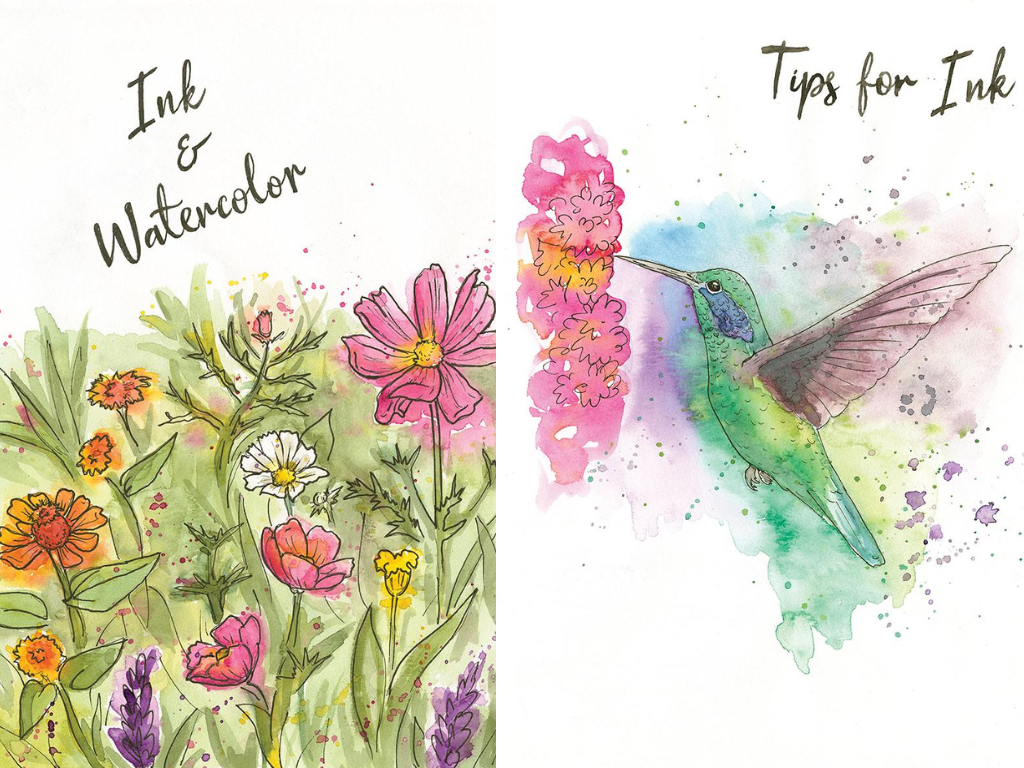
Make sure you choose a waterproof pen. I like Sharpies or Microns. I usually ink first, then paint. But it is fun to go back into a painting and add more ink later. Painting “loose” usually means not following the lines very closely—purposely letting the paint “blend” together. But be careful of complementary colors touching (colors across from each other on the color wheel). Those can look “muddy.”
Drawn to Birds: A Naturalist’s Sketchbook is available wherever books are sold. If you enjoyed this post, sign up for our newsletter now.


